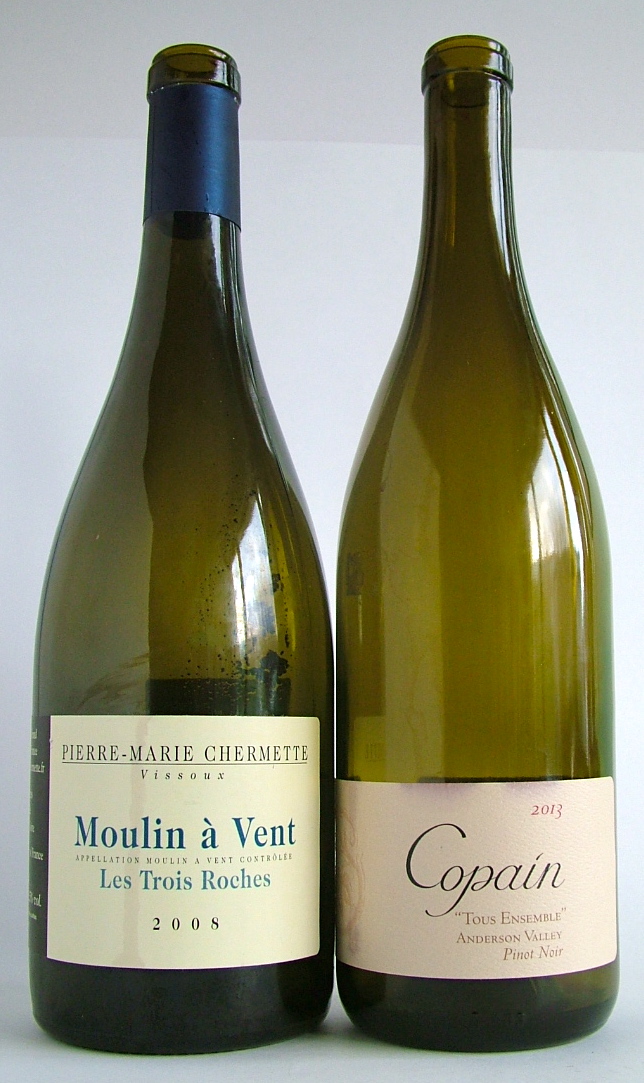Posted by admin on December 4, 2015
First published in The Irish Times 31st October, 2015
New Zealand is one of the very few countries that can claim to have conquered that difficult and quarrelsome grape, Pinot Noir. Two of the finest producers from that country visited Ireland in recent weeks.
The Ata Rangi vineyards were planted in 1980 by Clive Paton, his wife, Phyl, and sister Alison. At the age of 28, he sold his dairy herd and set about growing grapes. He had attended a meeting at which soil scientist Dr Derek Milne suggested that Martinborough, just down the road from his farm, had the potential for viticulture. He jokes that he knew the land was stony as he used to graze his knees every time he played rugby there (Paton scored a try against the touring 1977 Lions, and his grandfather was an All Black).
Martinborough is a small town, laid out in the shape of a Union Jack by its founder, Irishman John Martin, in the 19th century, on the North Island, an hour’s drive from the capital, Wellington. The deep gravel soils provide excellent drainage. Spring is cool, with an ever-present danger of frost, but the region benefits from strong winds (good for keeping disease away) dry autumn weather and very high diurnal fluctuation. The wider region, known as Wairarapa, now has more than 50 wineries.
Ata Rangi was the first to use the famous “gumboot” clone of Pinot Noir. The story goes that an anonymous New Zealand winemaker was travelling through Burgundy in the 1970s and took a cutting from the greatest Pinot Noir vineyard in the world, La Romanée Conti. He tried to smuggle it back into New Zealand in a gumboot. However it was confiscated by an alert customs official, Malcolm Abel, in Wellington airport. As Abel was interested in viticulture, he put it into quarantine and then planted it a few years later. He passed on some of its progeny to his friend Clive Paton; this clone now makes up most of the oldest vines in Ata Rangi, where it is said to produce wines with a fine silky tannins and dark brooding savoury fruits. Certainly this describes Ata Rangi Pinot to a tee. The wines, which can age brilliantly, are elegant and velvety.
Englishman Nigel Greening worked in the advertising business before falling in love with Pinot Noir. A self-confessed Pinot addict, he is one of the most articulate producers, thoughtful, knowledgeable about Pinot the world over, and Burgundy in particular. In 2000, he bought Felton Road in the far south of the South Island, and, with winemaker Blair Walter, has brought Felton Road to the very top of the Pinot tree. “It is probably one of the easiest places in the world to grow Pinot,” says Greening. They have aimed for a less muscular style in recent years. “We have moved to an earlier picking, just when the greenness goes; our wines are fresher and lighter.”
They now cultivate biodynamically, and are almost “closed gate”, producing enough food for 25 people and rarely going to the supermarket. “I have never been a fan of the Harry Potter end of biodynamics, burying cow horns and all that. Old-fashioned farming is my aim. I like the idea that our soil gets better every year and not worse,” he says.
Felton Road Pinots are completely different in style to Ata Rangi. They are vibrant and exuberant with good acidity and pure dark fruits whereas Ata Rangi is elegant and soft with subtle savoury flavours. Both rank amongst the best, not just in New Zealand, but in the world. Sadly these wines are not cheap, but then good Pinot Noir rarely is. I include one less expensive wine.
I would also recommend seeking out Dry River in Martinborough, Rippon in Central Otago, Bell Hill, Pyramid and Pegasus in Waipara, sadly unavailable here for the moment. You can find Two Paddocks, owned by actor Sam Neil, and Escarpment, made by “Mr Pinot”, Larry McKenna, both of which are excellent. Pinot Noir, by the way, goes very well with game, turkey and goose if you are looking for seasonal pairings.
 Brancott Estate Pinot Noir 2012, Marlborough
Brancott Estate Pinot Noir 2012, Marlborough
13.5%
€15.50
Light red cherry fruits with green herbs and a pleasant meatiness.
Stockists: Widely available including Tesco and other multiples.
 Felton Road Bannockburn Pinot Noir 2014, Central Otago
Felton Road Bannockburn Pinot Noir 2014, Central Otago
14%
£32.95/€46.95
Violet aromas, fresh black cherries and damsons with lovely acidity. Supple, soft and ready to go.
Stockists: jnwine.com; The Vineyard Ormeau Rd; The Lighthouse, Whiteabbey; Grange, Co Down; Emersons Armagh.
 Ata Rangi Pinot Noir 2013, Martinborough
Ata Rangi Pinot Noir 2013, Martinborough
13.5% €63.99
A stunning wine with structure and power, combined with perfectly ripe dark cherry fruits. A keeper.
Stockists: The Corkscrew, Dublin 2; O’Briens; On the Grapevine, Dalkey; Thewineshop.ie; Green Man Wines, Terenure.













 Frunza Pinot Noir 2014, Romania
Frunza Pinot Noir 2014, Romania Umbrele Merlot 2014, Romania
Umbrele Merlot 2014, Romania Paparuda Syrah 2013, Romania
Paparuda Syrah 2013, Romania
 13.5%
13.5%